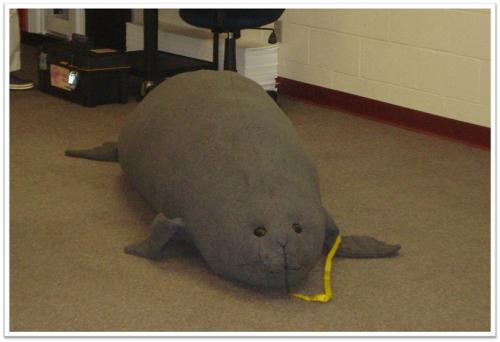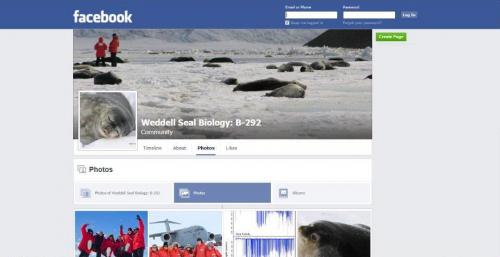School visits, web chats and Facebook – Oh My!
Now that the 2014-2015 school year is in full swing, the team and I have been on a mission to visit area schools and share information about the upcoming Weddell seal expedition scheduled to begin this November. But… have we been to your school? If not, we’d love to schedule a visit. We’ll even try to bring ‘Patrick’ along.

Not from the Memphis area?
What’s that? You are not from the Memphis area. That’s OK - we can chat via the web. Or if you are in the Anchorage, AK area, maybe I can get a member of the science team to visit YOU. These visits are informative, educational and best of all FREE. But… we are booking up fast, so e-mail me at alex.eilers [at] memphistn.gov to schedule your visit today!
Welcome to our Facebook page!
The Weddell seal team can’t wait to share their expedition information with you. In fact, they are so excited that two graduate students - Amy Kirkham and Roxanne Beltran - have started a Facebook page about the project. Check out what those crazy graduate students have been up tohere.

Project Description
We are B-292, a research team that travels to McMurdo Station, Antarctica to learn more about the amazing Weddell seal. Our team includes Doctors Jennifer Burns and Ward Testa and graduate students Amy Kirkham and Roxanne Beltran of the University of Alaska Anchorage. Educator, Alex Eilers, graduate student, Michelle Shero and veterinarian Rachel Berngartt are also a part of this year’s team.
The team is studying how Weddell seals spend their summers. The Antarctic summer is between October and February and it is a busy time for these animals; they give birth to pups, raise their young, go on foraging trips, and grow a completely new coat of fur.
The scientists are learning how all of these life history events and behaviors are linked to each other to better understand what influences Weddell seals' success in breeding, feeding, and molting. On this page, see updates from our November-February field seasons and the work we do back at home to get a close-up view of Antarctic science and Weddell seal biology!
Don’t miss awesome pictures like these on the Weddell Seal Biology Facebook page!

Like us, leave a comment, or share this site with your friends!
You can also follow the team and learn more about our research here:
http://antarcticarevisited.com/
http://www.polartrec.com/expeditions/weddell-seals-in-the-ross-sea-2014


Comments